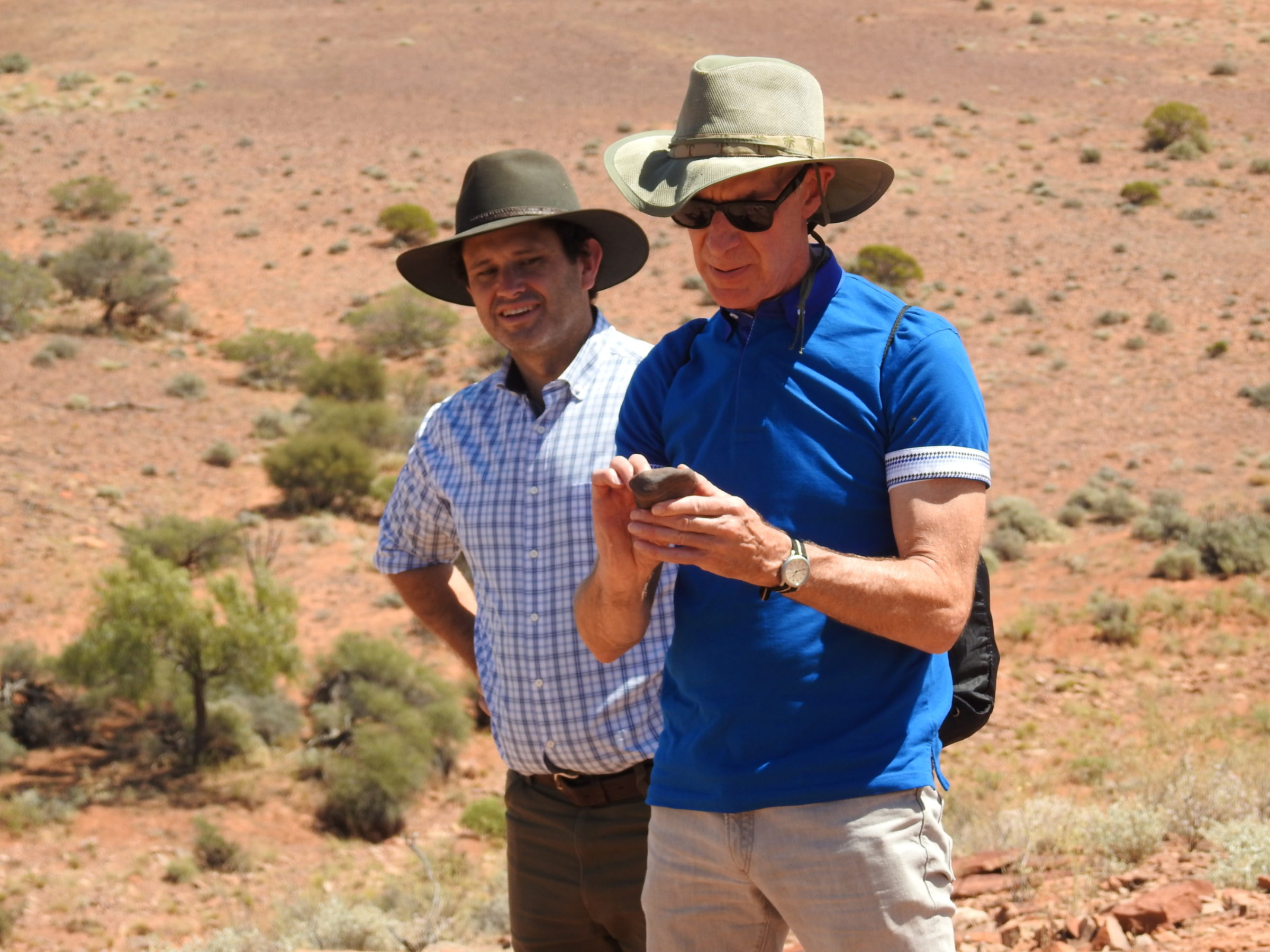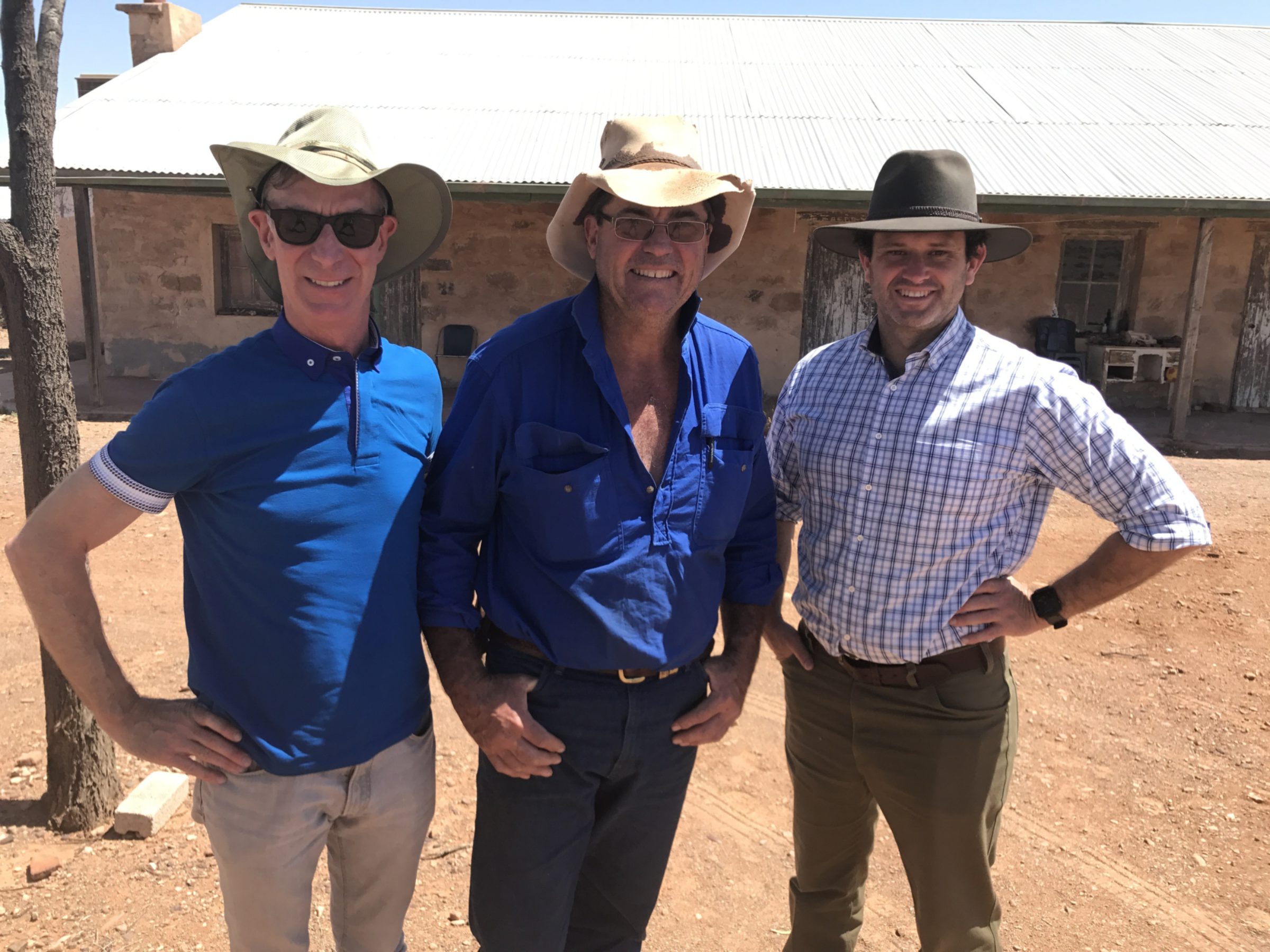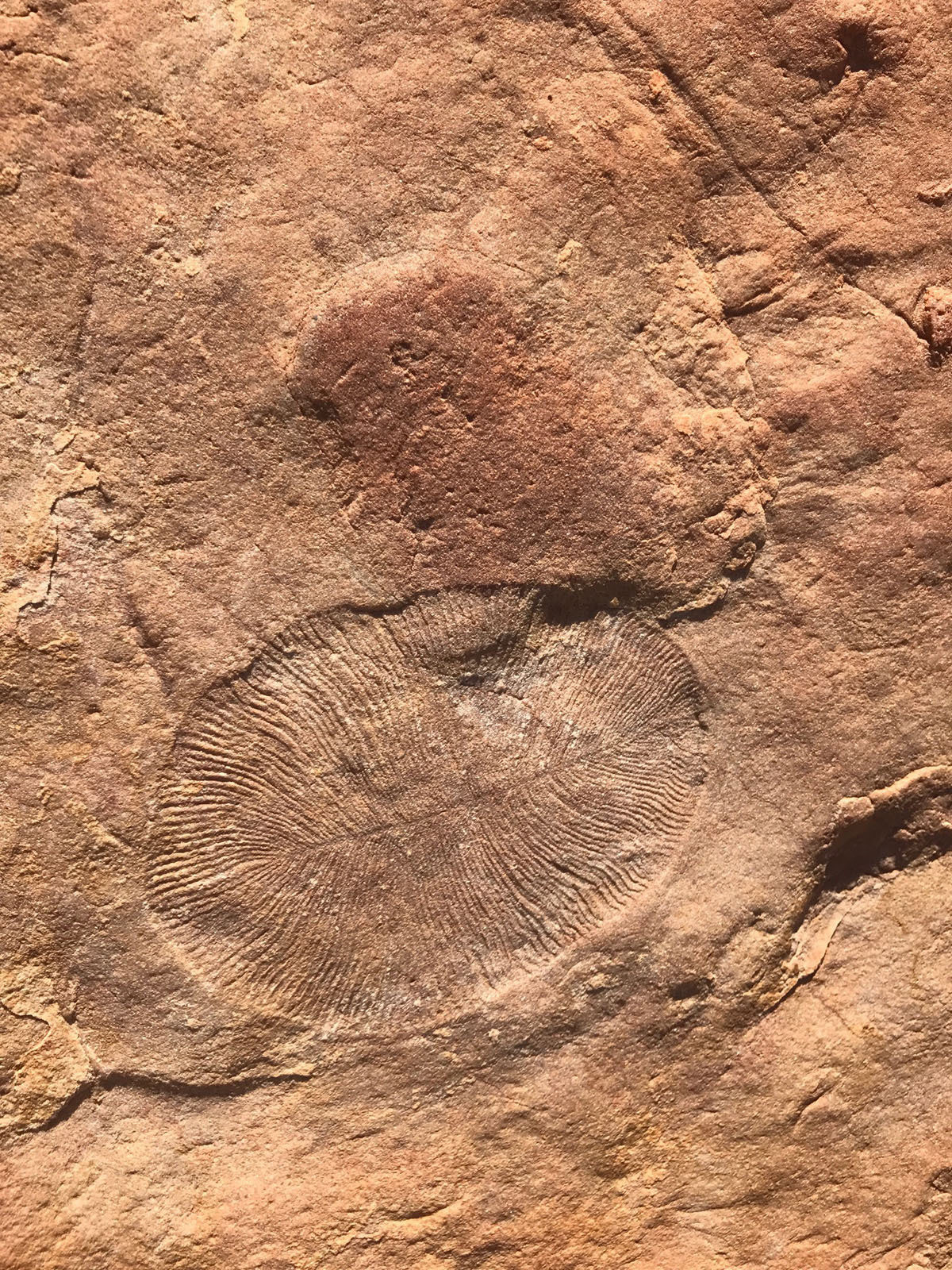Erin Greeson • Nov 06, 2017
Sharing Space in Australia
From Adelaide’s sleek skyline to the red, rugged outback...
...rock carvings from a first people to contemporary Aboriginal canvases...
...search-for-life technical sessions to Earth’s oldest Ediacara fossils...
...The Planetary Society’s 2017 journey to Australia expanded our perspective, advocacy and global community. It was rich with reminders close to Carl Sagan’s heart: We are all connected through time, humankind, and our origins in the stars.
IAC Adelaide: Igniting Our Potential Through Human Connection
Picture this: A man generates heat by hand with traditional tools. He is surrounded by dancers and shares ancient stories of the stars. A faint spark occurs in the dry, grassy tinder. Purple plumes begin to rise. The man holds this new fire up for all to see. The audience, people from all around the planet, applauds in awe through the dark auditorium.
This Opening Ceremony aboriginal welcoming was the start of our experience at the International Astronautical Congress (IAC) 2017 in Adelaide. It would become an analogy for what would unfold throughout our journey.
We traveled to South Australia to join the global community for the largest space industry event of the year, where government agencies, industries, and young professionals gather to share innovations and ideas. We brought our mission to the mix: citizen involvement; our movement for space.
The Planetary Society has always been a global organization with an international mission and member base. Headquartered in the U.S., we rely on interactions and collaboration with international colleagues and communities.
If you follow our space policy advocacy team (and I hope that you do), you heard about an event at the Australian Embassy in Washington, D.C. to promote IAC 2017 and conversations between the Australian government and The Planetary Society as Australia explored its vision to launch something exciting: a new space agency.

At IAC in Adelaide, we witnessed the historic announcement: a landmark for the global space community and a new platform for future collaboration with Australia. (Read Bill Nye’s related opinion piece here.) We learned more about Australia’s longtime connection to space, both as a modern nation and through the heritage of its first people—among Earth’s oldest human cultures—a people connected closely to the stars.
At IAC, attendees joined us for our CEO Bill Nye’s Highlight Lecture, “LightSail & Innovations in Solar Sailing.” Afterward, we had the privilege to meet Anja Vivian-Fryer, Indigenous STEM Mentor with the Department for Education and Child Development, Flinders University, South Australia. Anja described the Young Aboriginal STEM Thinkers of South Australia (YASTSA) and their IAC presence. She explained that aboriginal Australians are well-known for arts and sports skills but are too often overlooked for their talents in STEM curriculum and careers. Through our shared passion for breaking down barriers and increasing opportunities for underrepresented people (PHOTO, Anja and Bill), Anja and I exchanged perspectives and forged a close connection that continues to unfold today, now halfway around the world. Anja started a spark by engaging us. The sense of our potential together, across communities, is palpable and promising.
Into the Outback: Stories, Stones and Stars

IAC was just the start of our community-building down under. Next steps happened on the ground, in the outback.
Through relationships forged by our policy team, our CEO Bill Nye and group had the privilege to join South Australia Minister Hon Kyam Maher for a field trip to sacred outback sites. In addition to his duties as minister for science and information economy, minister for manufacturing and innovation, and minister for employment, Maher is minister for aboriginal affairs and reconciliation, a role fueled by his personal interest in rights, wellbeing and leadership for indigenous people (Minister Maher has aboriginal heritage). This dual focus on advancing science and innovation and empowerment for all people resonated strongly with The Planetary Society, given our mission (to empower the world’s citizens to advance space science and exploration). Minister Maher shared valuable perspective, educating us about past and present issues while setting sights on future opportunities for Australians. As we considered these lessons and opportunities, I couldn’t help but imagine possibilities to collaborate across communities, in the wake of IAC, Australia’s space agency announcement, and the potential to engage the global public.
Wilpena Pound: Stories of the Stars from an Oldest People
Journeying far from Adelaide’s high-energy streets and football finals buzz, we traveled to Wilpena Pound Resort, an aboriginal-run outdoor oasis in the heart of Flinders Ranges National Park. We dodged kangaroos crossing along the drive and saw “mobs” of the fascinating marsupials at dusk.
On Day 1, we arose early to hike. Minister Maher introduced us to Pauline McKenzie, an aboriginal elder, who guided us on an interpretive tour of The Sacred Canyon, a rock formation area where carvings by one of the oldest cultures on Earth told stories in the sunlight. That evening, after nightfall, we gathered for songs and storytelling around a campfire. Aboriginal elder Terrence Coulthard strummed his guitar and invited us to join in song. He told us ancient stories of the Seven Sisters and night sky, passed down through generations of aboriginal people.


Parachilna: Ancient Earth Fossils & Search for Life on Other Worlds

On Day 2, we left camp early to travel through the vast, magnificent Flinders Ranges to Parachilna, where the red dirt signified our entry into the true outback.
Our destination was Nilpena and its world-famous Ediacara National Heritage Fossil Site, which offers a rare fossilized glimpse of Earth’s oldest animal ecosystem. At The Planetary Society, we often ask: where did we come from? And are we alone in the cosmos? While we started our week in IAC conference rooms contemplating this search for life through technical sessions, we ended it with a trek into the outback to view some of the oldest exposed fossils on Earth, recordings of our early lifeform ancestors.

Ross Fargher, owner of Nilpena Station, was our guide. He discovered the fossil bed in the 1980s not far from the sheep shearers’ station on his land. The fossils ended up being some of the most important on Earth. The Ediacaran Era spans from 635 to 541 million years ago. The Nilpena fossils are extraordinary, because they preserve an animal ecosystem from an oldest era, not just individual species. Fargher jovially noted that one fossil deposit is nicknamed “Alice’s Restaurant,” because of its diversity of organisms.(For those unfamiliar with the Arlo Guthrie song, the key lyric is: “you can find anything you want at Alice’s Restaurant.”) This gave me a good laugh, as an avid 1960s folk fan. Fargher became an expert on the fossils and international teams of scientists studying them.

Leading the research is Dr. Mary Droser, a professor in the department of earth sciences at the University of California, Riverside, who, with NASA funding, has led teams of Earth geologists to pursue science that can inform planetary scientists’ approaches.
Dr. Droser shared her insights through written correspondence:
“The Ediacara fossils record the oldest animals on the planet and Nilpena is the best locality in the world for these fossils. Much of the work has been funded by NASA’s exobiology program. We have run the experiment of the origin and evolution of life on Planet Earth. Through geology, we can go back to different times in Earth’s 4.5 billion year history to examine how the planet itself evolved to host life as it does now. The Ediacaran represents one of the most important transitions in Earth’s history. These fossils are critical to our understanding of evolution and also how life evolves in, and responds to, environmental change and extreme environments.”
Viewing these fossils, we joked about saying hello to our distant cousins. We discussed the search for life on other worlds, places like Mars and Europa. Mr. Fargher explained how planetary geologists and Earth scientists are exchanging expertise as they seek to understand past life eras on Earth and the search for life, past and present, elsewhere in the cosmos.
While we learned much at IAC science paper presentations back in Adelaide, we learned equally from our expert outback guide. The collaboration between this knowledgeable rancher-turned-fossil-expert and the scientific community is an example of how connecting across sectors and communities leads to extraordinary things. In fact, Mr. Fargher recently traveled to Seattle, Washington, U.S., to receive the 2017 Strimple Award of the Paleontological Society, an honor presented to an amateur who has contributed significantly to the field of paleontology.
Full Circle at The Prairie Hotel: LightSail in the Outback
We bid farewell to Mr. Fargher and drove through long stretches of rugged red earth to The Prairie Hotel. The flora and fauna along the way were unfamiliar and marvelous to me, a North American experiencing Australia for the first time.
The biodiversity, from emus and wedge-tailed eagles to leafy species of gumtrees, made me contemplate how different beings evolved in different ways across Earth’s regions over time. I pondered astrobiology—the potential for life on other worlds—inspired by our discussions at the Ediacara fossils.
At The Prairie Hotel, we were greeted by Jane Fargher, owner and Ross Fargher’s partner and wife. She shared information about the unique establishment and hosted us for delectable outback dishes. (The Prairie Hotel is renowned for is feral mixed grill, featuring: grilled emu, camel and kangaroo, which our CEO Bill Nye ordered and enjoyed.)
Over lunch, Bill unpacked his LightSail model to provide a solar sailing demonstration to Minister Maher and his party. (Picture). After the high-energy week at IAC Adelaide and Bill’s highlight lecture, this laid-back sharing between colleagues in the outback—people of diverse duties, cultures and backgrounds, united by a shared passion for science—felt so simple and meaningful.

Back in Adelaide, before the flight homeward, I visited the South Australian Museum to learn more about aboriginal culture. I was delighted to find an exhibit of contemporary space-inspired aboriginal works juxtaposed with two floors of traditional artifacts and interpretive displays.
Going from the IAC Adelaide to oldest cultures, carvings, and fossils in the outback, then back to the city, one thing was clear: space science connects all people. It’s something we all have in common. We look up, and we lift up.
Our community in Australia is inspired and expanding. By connecting across communities, and sharing key science and cultural perspectives, we can move closer toward accomplishing our greatest achievements yet in space and on our home planet, Earth.
The Planetary Society extends gratitude to the people of Australia and looks forward to continuing our journey together.
Special thanks to: the aboriginal first people of South Australia, Australia’s communities, the Australian and South Australian governments; Anja Vivian-Fryer; Pauline McKenzie; Terrence Coulthard; Minister Kyam Maher, his family, and staff, Andrew Love & Amy Rust; Neil Turner; Ross & Jane Fargher of The Prairie Hotel & Nilpena Station; Dr. Mary Droser; Wilpena Pound Resort, Flinders Ranges National Park; City of Adelaide; International Astronautical Federation and IAC17 organizers; Abed Aldaas, Silvia Antolino, Emma Huis for Bill Nye Highlight Lecture support; Kevin Stube.
Support our core enterprises
Your support powers our mission to explore worlds, find life, and defend Earth. You make all the difference when you make a gift. Give today!
Donate

 Explore Worlds
Explore Worlds Find Life
Find Life Defend Earth
Defend Earth




